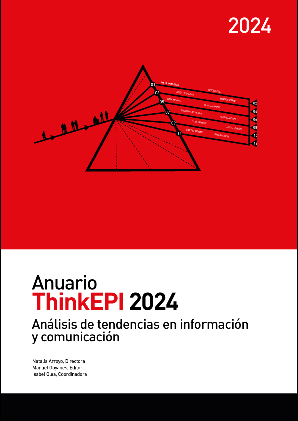Clarity as a right: the contribution of ISO 24495-1 towards plain language
DOI:
https://doi.org/10.3145/thinkepi.2024.e18a09Keywords:
Plain language, Right to understand, Content creation, Standardization., ISO 24495-1Abstract
In July 2023, the TC 37 committee of the International Organization for Standardization (ISO) culminated years of collaborative efforts by publishing the ISO 24495-1 standard for plain language. This standard, a product of a broad consensus, is now accessible to anyone committed to enhancing clarity in communication. Crafted by experts in plain language: linguists, technical writers, translators, designers and content creators from various countries, this authoritative guide will assist authors in producing texts (print or digital documents, as well as scripts for multimedia content) that are clear and accessible to their intended audience. Applicable across most written languages, the standard integrates the latest research findings and the collective expertise of plain language professionals.Downloads
References
Adler, Mark (2012). “The plain language movement”. En: Solan, Lawrence M.; Tiersma, Peter M. (eds.). The Oxford handbook of language and law. Oxford Academic.
Balmford, Christopher (2002). “Plain language: beyond a movement”. PlainLanguage.gov. https://plainlanguage.gov/resources/articles/beyond-a-movement
García, Óscar (2020). “El lenguaje claro aumenta la confianza en las empresas”. BBVA. https://bbva.com/es/el-lenguaje-claro-aumenta-la-confianza-en-las-empresas
García-Asensio, M.ª Ángeles; Polanco-Martínez, F.; Montolío-Durán, E. (2022). “Redacción clara un nudge y una respuesta a la exigencia democrática de transparencia en la comunicación entre la Administración y la ciudadanía”. En: Ponce Solé, Juli (coord.). Acicates (nudges), buen gobierno y buena administración: aportaciones de las ciencias conductuales, “nudging” y sectores público y privado (pp. 191–215). Marcial Pons. ISBN: 978-84-1381-380-6
ISO (2023). ISO 24495-1:2023. Plain language, part 1: governing principles and guidelines. https://www.iso.org/standard/78907.html
Kimble, Joseph (2023). Writing for dollars, writing to please: the case for plain language in business, government and law. 2nd ed. Carolina Academic Press. ISBN: 978 1611631913
Kloberdanz, Kristin (2017). Honey, I shrunk the contract: how plain English is helping GE keep its business humming. GE Reports.
Loranger, Hoa (2017). Plain language is for everyone, even experts. Nielsen Norman Group. https://nngroup.com/articles/plain-language-experts
Marazzato-Sparano, Romina (2021). “Lenguaje claro en el siglo XXI: panorama general y propuesta de aplicación al proceso de traducción y corrección”. Revista internacional de lenguas extranjeras, n. 15. https://doi.org/10.17345/rile15.3150
Montolío-Durán, Estrella; Tascón, Mario (2020). El derecho a entender: la comunicación clara, la mejor defensa de la ciudadanía. Catarata. ISBN: 9788490979662
International Plain Language Federation (s.f.). Plain language definitions. https://iplfederation.org/plain-language
Oppenheimer, Daniel M. (2005). “Consequences of erudite vernacular utilized irrespective of necessity: problems with using long words needlessly”. Journal of applied cognitive psychology, v. 20, n. 2. https://doi.org/10.1002/acp.1178
Polanco-Martínez, Fernando; Montolío-Durán, Estrella; García-Asensio, M.ª Ángeles (2024). “Ciencias del comportamiento, acicates (nudges) y lingüística conductual: la acción lingüística al servicio de una comunicación institucional clara”. Asterisco: revista de lingüística española, n. 2, 79–101. https://doi.org/10.14201/ast.2024279101
Rosenberg, Adeline; Walker, Joanne; Griffiths, Sarah; Jenkins, Rachel (2023). “Plain language summaries: enabling increased diversity, equity, inclusion and accessibility in scholarly publishing”. Learned publishing, v. 36, n. 1. https://doi.org/10.1002/leap.1524
Schindler, Thomas M. (2024). “The making of the international standard for writing in plain language ISO 24495-1: its usefulness, content and how it came into existence”. https://doi.org/10.55752/amwa.2024.333
Tabler, Norman G. (2018). “The $5 million comma”. The Federal Lawyer, October-November. https://www.fedbar.org/wp-content/uploads/2018/10/Commentary-pdf-1.pdf
UNE (2024). UNE-ISO 24495-1:2024. Lenguaje claro. Parte 1: Principios rectores y directrices. https://www.une.org/encuentra-tu-norma/busca-tu-norma/norma?c=N0072523
Downloads
Published
How to Cite
Dimensions


